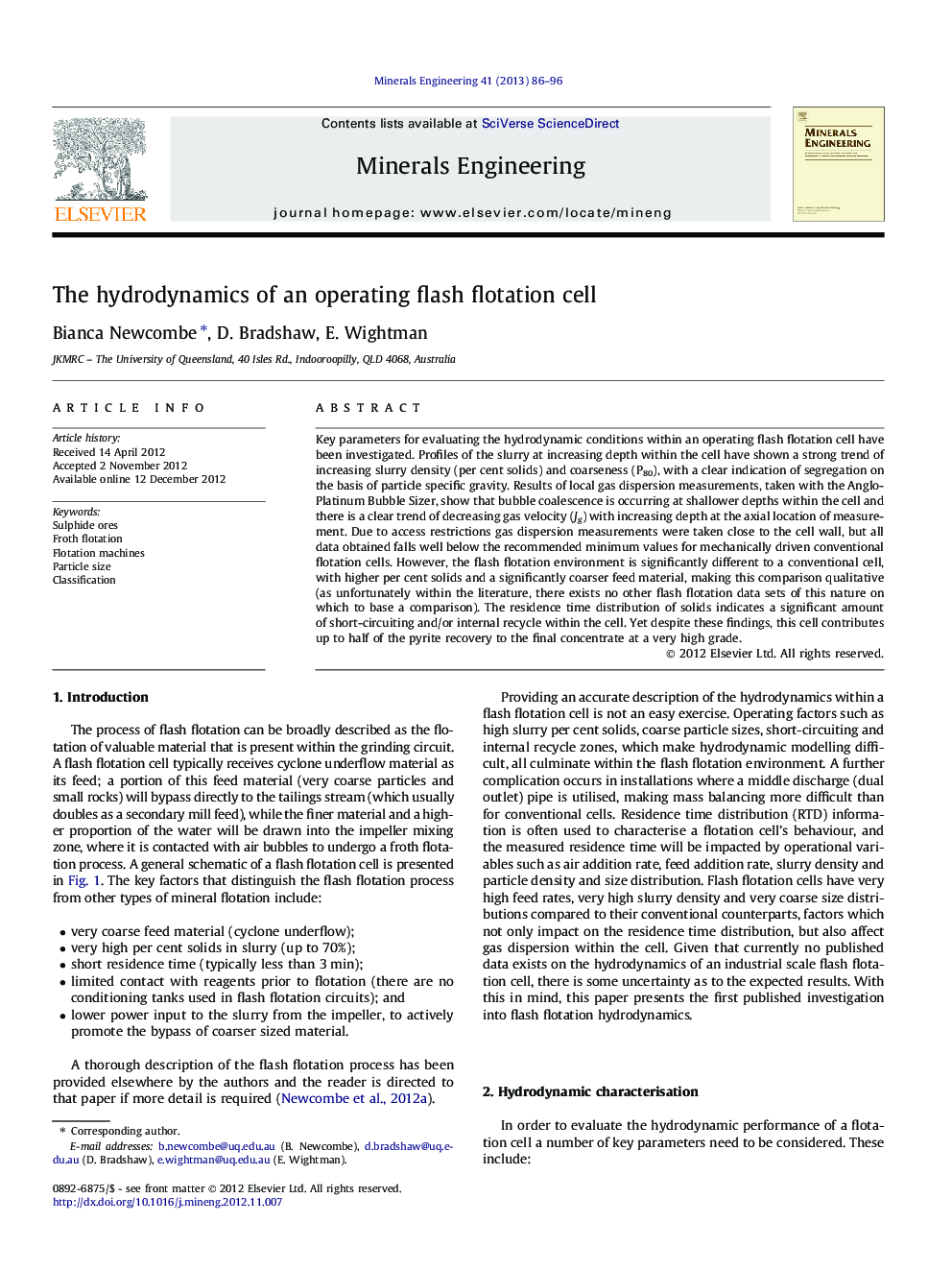| Article ID | Journal | Published Year | Pages | File Type |
|---|---|---|---|---|
| 233481 | Minerals Engineering | 2013 | 11 Pages |
Key parameters for evaluating the hydrodynamic conditions within an operating flash flotation cell have been investigated. Profiles of the slurry at increasing depth within the cell have shown a strong trend of increasing slurry density (per cent solids) and coarseness (P80), with a clear indication of segregation on the basis of particle specific gravity. Results of local gas dispersion measurements, taken with the Anglo-Platinum Bubble Sizer, show that bubble coalescence is occurring at shallower depths within the cell and there is a clear trend of decreasing gas velocity (Jg) with increasing depth at the axial location of measurement. Due to access restrictions gas dispersion measurements were taken close to the cell wall, but all data obtained falls well below the recommended minimum values for mechanically driven conventional flotation cells. However, the flash flotation environment is significantly different to a conventional cell, with higher per cent solids and a significantly coarser feed material, making this comparison qualitative (as unfortunately within the literature, there exists no other flash flotation data sets of this nature on which to base a comparison). The residence time distribution of solids indicates a significant amount of short-circuiting and/or internal recycle within the cell. Yet despite these findings, this cell contributes up to half of the pyrite recovery to the final concentrate at a very high grade.
► Hydrodynamic study of an industrial flash flotation cell treating pyritic ore. ► Gas dispersion measurements of bubble size and Jg taken with increasing depth. ► Clear trends of increasing slurry per cent solids with increasing depth. ► Classification of particles by size within the flotation zone is evident. ► Fine solids RTD data indicates significant amount of bypass and/or internal recycle.
